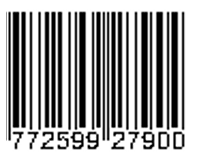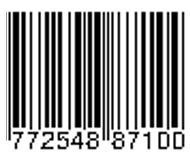Author Guideline
AUTHOR GUIDELINES AND TEMPLATE OF LINGUA LITERA: Journal of English Linguistics and Literature
- GENERAL INFORMATION
Articles are based on research on English Language Studies, concerning Literature, Linguistics, and Education. Articles have not been published or accepted for publication or being considered for publication elsewhere. The body of the article should be approximately 10-20 pages in length including the references. The article is written in English using Microsoft Word in 1.5 line spacing, 12pt Times New Roman, paragraph justify, and two columns. The body of the article consists of several sections (Introduction, Review of Related Literature, Research Method, Finding and Discussion, Conclusion, References, Appendixes). The articles must be free from any practice of plagiarism maximum 20%.
Top margin : 2,54 cm Bottom margin : 2,54 cm
Left margin : 3,18 cm Right margin : 3,18 cm
- BODY OF THE ARTICLE
THE ARTICLE TITLE IS CONCISE AND REFLECTS THE CONTENT
(Centered, Bold, Uppercase, 14pt TNR, 1 line spacing)
Author’s name without title
Institution/Affiliation
E-mail address (italic)
(Centered, 12pt TNR, 1 line spacing)
Abstract
The abstract should reflect the whole content of the article. The abstract includes research problems, theory, methods, and results. The article is written in English in one paragraph, in 1 line spacing, and between 150 to a maximum of 200 words each.
Keywords
Keywords represent the important terms in the article maximum 5 words each after the abstract and are written in English.
- INTRODUCTION (12pt TNR, Uppercase, 1.5 line spacing)
The Introduction includes background, objectives, theory, methods, and literature review. The section ends with an emphasis on items be discussed. (12pt TNR, 1.5 line spacing)
- REVIEW OF RELATED LITERATURE (12pt TNR, Uppercase, 1.5 line spacing)
The Review of Related Literature section must consist of the summary or analysis of all the researches the author read before doing his/her own research. This section may be part of the introduction or in a section called Background. It provides the background on who has done related research, what that research has or has not uncovered and how the current research contributes to the conversation on the topic. (12pt TNR, 1.5 line spacing)
- RESEARCH METHOD (12pt TNR, Uppercase, 1.5 line spacing)
The methodology section or methods section must tell the reader how the author(s) went about doing their research. It should let the reader know a) what method the author used to gather data (survey, interviews, experiments, etc.), b) why the author chose this method, and c) what the limitations are to this method. (12pt TNR, 1.5 line spacing)
- FINDING AND DISCUSSION (12pt TNR, Uppercase, 1.5 line spacing)
The finding section is where the author(s) talk about what they found in their research study. The discussion section is where the author(s) write about what they found and what they think it means. The authors may also draw some conclusions about the research and what significance it has in this section. This section will also tell the reader what some of the issues were with the research or using a specific population for a research study. It should be enriched by referring to the related references. The discussion can be presented in sub-sections. (12pt TNR, 1.5 line spacing)
- Citation
The article applies APA 6th Edition Format. References in the body of the article use parentheses. If the direct quotation is fewer than 40 words, it should be incorporated into your paragraph and enclose it in double quotation marks. David Copperfield starts with "Whether I shall turn out to be the hero of my own life, or whether that station will be held by anybody else, these pages must show" (Dickens, 1869, p. 1). If the quotation comprises 40 or more words, it should be displayed in an indented, freestanding block of text, without quotation marks. At the end of a block quotation, cite the quoted source and the page number in parentheses, after the final punctuation mark.
Whether I shall turn out to be the hero of my own life, or whether that station will be held by anybody else, these pages must show. To begin my life with the beginning of my life, I record that I was born (as I have been informed and believe) on a Friday, at twelve o’clock at night. It was remarked that the clock began to strike, and I began to cry, simultaneously. (Dickens, 1896, p. 1)
In-text citation (enclosed in parentheses), which appear in the body articles, should contain the last name of the author(s) and the year of publication: (Saukko, 2003) is used for works by one author; (Shabanirad & Marandi, 2015) is used for works by two authors; (Paradis et al., 2016) is for works by three or more authors, only the last name of the first author is used, followed by ‘et al’.
Online sources required an access date if no publication date is provided. Pictures, graphics, and tables can be included in the body articles with requirements as followed:
- The picture is not blurred if it is zoomed for the size of magazine or fits with the A4 paper with maximum size 5mb.
- Pictures and graphics background by the color white.
- All pictures, graphics, and tables must be numbered and captioned. An example of a caption is as follow:
Figure 1: The author with unidentified friend, 2015.
Figure 2: The author posed for this picture with an unidentified friend in 2015.
Figure 3: Habib Zarbaliyev at LP2M International Conference “Multiculturalism, Nationalism, and Islam: Indonesia, Turkey, and Azerbaijan”, 2016. Courtesy Shofwan Anwar Abdul Rauf, The State Institute for Islamic Studies of Surakarta, Surakarta.
Figure 4: “Religion” drawing by Hugh Ferries (2015).
- CONCLUSION (12pt TNR, Uppercase, 1.5 line spacing)
Conclusion is not just data repetition but presents the essence of interpretation. It can be a statement about expectations as stated in the introduction, ultimately based on the findings and discussions. (12pt TNR, 1.5 line spacing)
REFERENCES (12pt TNR, Uppercase, 1.5 line spacing)
The reference section at the end of the articles provides full bibliographic information for all work cited in the text. Works that are not cited should not be included in this section. The Editor strongly recommends using APA 6th Edition Format for References and are arranged alphabetically by authors, then chronologically in ascending order. The editorial board strongly suggests that the references included in the text must contain at least 75% of articles published in the last 10 years and 25% of primary books and others which are relevant to a research as the writing of the references as followed:
- Book
Bridge, J. S. (2003). Rivers and floodplains: Forms, processes, and sedimentary record. Malden, MA: Blackwell Science Ltd.
- E-book
Musil, R. K. (2009). Hope for a heated planet: How Americans are fighting global warming and building a better future [NetLibrary Reader version]. Retrieved from http://rutgerspress.rutgers.edu
- Chapter from Edited Book
Narayan, K. (1995). Taking oral literacy criticism seriously: Reflections on a Kangra women's song. In R. Bendix & R.L. Zumwalt (Eds.), Folklore interpreted: Essays in honor of Alan Dundes (pp. 237-264). New York, NY: Garland Publishing, Inc.
- Journal Article
Sanders, S. & Hoffman, K. (2010). Ethics education in social work: Comparing outcomes of graduate social work students. Journal of Social Work Education, 46(1), 7-22.
- Journal Article with DOI
Bright-Paul, A., Jarrold, C., & Wright, D. B. (2008). Theory-of-mind development influences suggestibility and source monitoring. Developmental Psychology, 44, 1055-1068. doi: 10.1037/0012-1649.44.4.1055
- Journal Article without DOI
Couvillon, M., Peterson, R. L., Ryan, J. B., Scheuermann, B., & Stegall, J. (2010). A review of crisis intervention training programs for schools. Teaching Exceptional Children, 42(5), 6-17. Retrieved from http://www.cec.sped.org/content/navigationmenu/
- Magazines Article
Rich, N. (2010, September 2). The most dangerous man in cyberspace. Rolling Stone, (1112), 71-73, 88-89.
- Multi author works
Siegel, R. D., & Yalom, V. (2016). Integrating mindfulness into counseling and psychotherapy. San Francisco, CA: Kanopy Streaming.
- Journal Article
Udasmoro, W. (2018). Othering and Selfing: Reading Gender Hierarchies and Social Categories in Michel Houellebecq’s Novel Soumission. Jurnal Humaniora, 30(1), 1–9.
Zulkarnain, J. A., & Wiyatmi. (2018). Dekonstruksi Femininitas dalam Novel-Novel Karya Eka Kurniawan: Dari Pekerjaan sampai Kecantikan. Poetika: Jurnal Ilmu Sastra, 6(2), 109–121.
- Online journal article
Seow, W. K., Clifford, H., Battistutta, D., Morawska, A., & Holcombe, T. (2009). Case-control study of early childhood caries in Australia. Caries Research, 43(1), 25-35. doi:10.1159/000189704
- Skripsi, thesis and dissertation
Saptari, R. (1995). Rural Women to the Factories Continuity and Change in East Java’s Kretek Cigarette Industrie [PhD thesis, Amsterdam Institute for Social Science Research (AISSR)].
- Paper or presentation
Setiawan, A., & Tjahjani, J. (2019). A Claim against Destiny as Criticism of Javanese Philosophy in Indonesian Novel. Proceedings of the Proceedings of the 1st Seminar and Workshop on Research Design, for Education, Social Science, Arts, and Humanities. SEWORD FRESSH 2019, April 27, Surakarta, Indonesia.
- Interview
Onyesoh, J. (2018, August 22). Author Interview [Personal communication].
- Newspaper and popular magazine
Salam, A. (2013, May 4). Mengapa Nasionalisme Kita Lemah ?. Kedaulatan Rakyat, pp. 12
- Unpublished or archived source
National Archives of Indonesia Collection: LAPAN 1950-2002.







